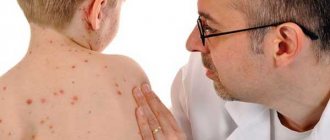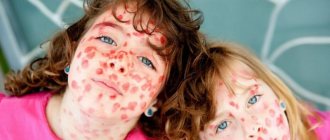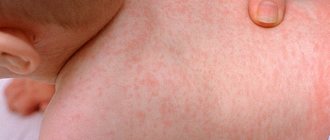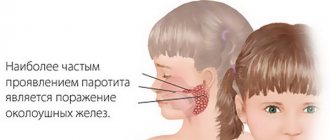Chickenpox (chickenpox) is an acute infectious viral disease transmitted by airborne droplets and characteristic mainly of children. A typical manifestation of chickenpox is a profuse blistering rash all over the body.
Most often, chickenpox occurs between the ages of 6 months and 7 years . A child up to 6 months has immunity received from the mother’s body. After 10 years the disease is rare. However, if a person did not have chickenpox as a child, he may become ill as an adult, and in this case, the disease is usually severe.
Recovery period in children
On average, children suffer from chickenpox from 7 to 20 days. The specific duration of the disease depends on:
- age;
- viral load;
- state of the immune system.
The source of infection is the carrier of the virus: usually an already ill child or adult. It is very difficult to predict in advance how long the disease will take.
The incubation period of chickenpox lasts 3–10 days, sometimes extending up to 2 weeks. In the last 1–2 days before the onset of the first signs, the infected person already spreads the virus. The danger of transmission of infection remains until the end of the disease - 5-7 days from the date of the last blisters appearing on the skin.
From the moment the first symptoms of chickenpox are suspected: lethargy, fever, headaches, the child should be isolated. They stop taking him to kindergarten or school, limit his communication with other children, and temporarily stop walking on the street. It is recommended to put your baby to bed or give him plenty of rest.
On the 2nd–5th day after the deterioration of health, the skin begins to be strewn with chickenpox spots and pustules - bright pink bubbles.
Chickenpox cannot be treated with antibiotics. Its causative agent is a virus of the herpetic group, in the process of reproduction and life activity it is insensitive to drugs. Drugs are unable to shorten the duration of the disease. All that can be done is to alleviate the symptoms, take measures to prevent the development of secondary pathology. The infection is gradually destroyed by the immune system, which produces specific antibodies.
By the end of the illness, the physical condition of children improves significantly, and skin itching subsides. You can go for a walk 4–5 days after the last bubbles burst.
Features of the disease
The causative agent of chickenpox is herpes virus type 3. The pathogen is particularly volatile and 100% contagious. That is, after contact with the pathogen, all people without immunity to it become infected.
The virus is released from the body of a sick person through the mouth and nose. Infection of a healthy person also occurs through the upper respiratory tract, and after 10-21 days the disease develops. Due to the prevalence in the environment and the high contagiousness of the virus, by the age of 15 years, 70%-90% of people have chickenpox.
During illness, the immune system produces antibodies to the virus, which remain in the body for life. A person who has recovered from the disease receives lifelong immunity. Sometimes the immune system goes wrong. It loses the ability to contain and neutralize the virus, and the person becomes ill again.
The virus integrates into the nerve ganglia and remains in a latent (stationary) state for life. After weakening of the immune system, a relapse is possible - activation of the pathogen. A person can not only get chickenpox again, but the infection can also manifest itself as another disease - herpes zoster.
Duration of illness depending on the form of chickenpox
Almost always, chickenpox at a young age occurs in mild or moderate severity with moderate severity of symptoms.
The classic picture of uncomplicated forms of the disease:
- low-grade or high body temperature in the first 1–2 days;
- single or multiple small blisters on the skin that periodically burst and heal;
- severe itching.
Causes of recurrent chickenpox
To become infected with chickenpox a second time, two conditions are needed - a sharp decrease in the tension of the immune system and contact with a sick person.
Immunity is weakened by diseases and disorders that reduce the level of lymphocytes, antibodies and other components of the defense system. Environmental factors also influence, leading to severe metabolic disorders.
Common causes of re-infection with chickenpox:
- chronic bacterial and viral infections;
- parasitic infestations;
- excessive blood loss due to burns, kidney disease;
- chronic diarrhea;
- stress syndrome, chronic fatigue;
- severe injuries and operations;
- diseases of the endocrine system: hypothyroidism, hyperthyroidism;
- malignant neoplasms;
- autoimmune diseases;
- long-term or inadequate use of antibiotics, cytostatics, antimetabolites, hormonal drugs;
- acute, chronic poisoning with xenobiotics: chemicals, narcotic substances;
- depletion of the body: nutritional defect, nutrient deficiency;
- environmental pollution, ionizing and microwave radiation.
Immunodeficiency often occurs for physiological reasons in people over 60 years of age, pregnant women and young children.
In childhood, the cause of chickenpox 2 times may be the first infection at too early an age. An immature immune system does not always produce antibodies.
Does the duration of the disease depend on age?
It is known that chickenpox passes quickly and easily in 3-8 year old children; how long it lasts in older or younger children depends on the state of general health.
At the age of 12 years, mild and moderate forms of the disease are possible. Frequent cases of a rudimentary or subclinical course: without deterioration in physical well-being, with the formation of several single pimples. Often, children of primary school age do not feel symptoms at all, and blisters on the skin can only be noticed if they appear on the face. A child can completely recover externally in 6–8 days. However, the possibility of infection from it remains for another 3–5 days.
Cases of protracted or complicated course in children 10–12 years old are more common than in preschool children.
Chickenpox lasts longer than usual in older teenagers and adults. In them, as in adults, the severe course of the disease is influenced by various factors:
- reduced immunity;
- existing chronic disorders;
- recent acute respiratory viral infections and other infections.
Full recovery in older children may take up to 2 months. In some cases, subsequent complications from internal organs, the central nervous system, heart and blood vessels are possible.
Treatment methods for chickenpox
As a rule, chickenpox in children passes without complications. The disease is dangerous during pregnancy: if the expectant mother did not have chickenpox in childhood (i.e. does not have the appropriate immunity), the infection can lead to the development of serious pathologies and even the death of the fetus.
Treatment of chickenpox is aimed at preventing complications; in children, first of all, one must try to prevent secondary infections from entering the skin lesions.
If you notice symptoms of chickenpox in your child, call our pediatrician at home.
Symptomatic treatment
The sick child is prescribed bed rest. If a child does not tolerate fever well, he may be prescribed antipyretics. The focus is on relieving itching and treating rashes. Drinking plenty of fluids is recommended. Prescription of antiviral drugs is practiced.
Vaccination
A method of specific prevention of the disease is vaccination. The vaccine forms lasting immunity for many years. Upon contact with a patient, emergency vaccination is carried out within the first 72 hours.
When planning a pregnancy, it is advisable to get tested to make sure you have immunity to the chickenpox pathogen. If specific bodies are not found, doctors recommend vaccination against chickenpox to eliminate risks during pregnancy.
At JSC "Family Doctor", vaccination against chickenpox is carried out using imported drugs - Varilrix, Okavax. Our specialists will select a convenient vaccination schedule for you.
More information about the treatment method
Make an appointment Do not self-medicate. Contact our specialists who will correctly diagnose and prescribe treatment.
Rate how useful the material was
thank you for rating
Frequency of rashes and duration of skin healing
Chickenpox rashes in children go through several stages. First, pink spots appear on the skin. The next day they transform into raised nodules - papules. After another day, the formations enter the vesicle phase - bubbles with a watery liquid inside. The shell bursts on its own after 1–2 days, and the weeping wound at the site of the bubble is covered with a thin crust. After a few days, a new layer of epidermis grows on the affected area, the scabs peel off and fall off.
Doctors' opinion
You can predict when a child will get chickenpox after identifying the infection in the immediate environment: family, team. You can get infected from neighbors, passengers in transport, and random passers-by. Parents of children should always be prepared for this type of herpes, especially when they attend kindergarten.
You should not panic when you discover a case of chickenpox in someone you know. The sooner the child experiences it, the better protected he will be in the future. For children over 3 years of age who do not suffer from genetic or immunodeficiency pathologies, this infection does not cause serious harm.
A sick child should be protected from unnecessary contacts by organizing home quarantine. If your health worsens, it is necessary to give symptomatic medications: antipyretics and antihistamines. Herpetic blisters need to be treated with antiseptics.
Is it possible to get sick a second time?
You can get chickenpox again, although this happens very rarely. When chickenpox occurs for the first time, the body develops immunity to it, which, when viruses enter the next time, blocks their vital activity. However, a person with reduced immunity increases the risk of reinfection.
The virus can easily enter the body and progress in the following cases:
- a person has been suffering from another disease for a long time;
- systematically exposed to heavy physical work;
- has bad habits such as alcohol and cigarettes.
Results
The duration of chickenpox in children is, on average, from 7 to 20 days. The possibility of transmitting the virus to others remains from the end of the incubation period until the last rash on the body heals. During an outbreak of this infection, quarantine in children's institutions is announced for 2 weeks. In severe generalized and complicated forms, the child’s recovery can take up to several months.
See
Diet for chickenpox in adultsChickenpox without fever symptoms in childrenPurulent chickenpox in adults photoHow many days does chickenpox last in children
How long does an adult have chickenpox?
Note that in this article we looked at average statistical data. We did not take into account atypical forms of infection, since they are currently rare and their appearance is always facilitated by certain individual characteristics of the human body.
We will take the first symptomatic manifestations as the starting point, and the actual end of the disease as the ending point.
How many days does an adult suffer from chickenpox? Severe health will accompany the patient for 13-21 days.











